Enjoy the spectacular scenery on the drive from Homestead to Flamingo in Everglades National Park by stopping at a variety of amazing locations on this route. The journey will take you through three distinct ecosystems of Everglades National Park. Coastal mangroves, sawgrass marshes, and pine flatwoods hammocks make up the Everglades ecosystem. The main road from Ernest F. Coe Visitor Center to the Flamingo Visitor Center follows the Ingraham Highway traveling 38-miles through each of the three distinctive Everglades ecosystems.
This post may contain affiliate links, meaning if you purchase something through one of these links, we may earn a small commission at no extra cost to you! Read the full disclosure policy here

Table of Contents
Homestead-Flamingo Everglades Road Trip: Important to Know Before You Go
- Entrance Fees: Everglades National Park charges a fee to enter. The entrance fee in the park is $15 per person ($30 per vehicle) and is valid for a 7 days. If you are planning on visiting over one national park, it is worthwhile to purchase the Annual Pass ($80). It is well worth the price! We purchase our pass every year; the fees support the parks.
- You can visit the park at any time, 365 days a year. Nevertheless, park visitor centers also have their own operating hours and seasons, which are posted on the park’s website or can be obtained by calling (305) 242-7700.
- Before hiking in the Everglades, remember to bring water in a refillable water bottle, sunscreen, bug repellent, binoculars, and a camera are essential for hiking the trails. Furthermore, wear long pants and long-sleeved shirts, and wear waterproof or wading shoes.

Get Your Scenic Drive Started at the Enest Coe Visitor Center
This is an amazing place with so much to offer. A good starting point for any visitor to the Everglades is one of the Visitor Centers. There are two visitor centers in the park, the Ernest Coe Visitor Center and the Flamingo Visitor Center. Click here for the Everglades National Park map.
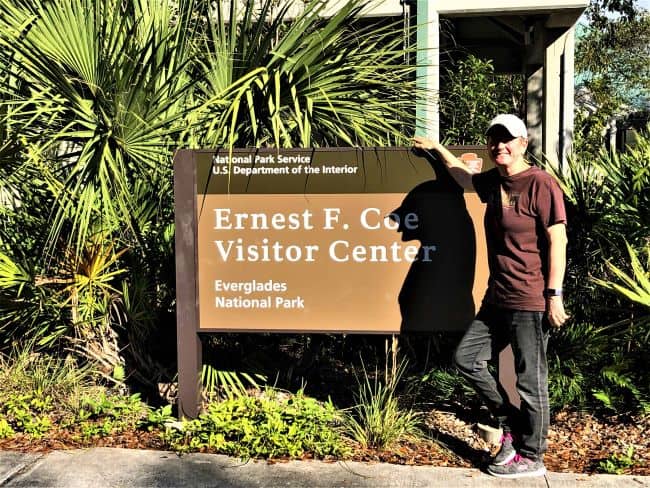
Journey Into The Heart Of The Everglades For The First Time
A journey into the heart of the Everglades is a fantastic opportunity to connect with nature and experience a one-of-a-kind environment. The first stop is the visitor centers.
Royal Palm Information Center

This is the first stop for most visitors to the Everglades driving from Homestead to Flamingo. The spur road is located 1.6-miles from the park entrance. Follow the spur road 1.9-miles to reach the information center building and parking lot. This area of the park fills quickly. I prefer to visit early in the morning or late in the afternoon. The center is open from 9 am- 5 pm. Their information center provides restrooms, a bookstore, and ranger-led tours.
PRO Tip: The park provides tarps and bungee cords to cover your vehicle. This is to protect your vehicle from the vultures eating the rubber on cars-specifically windshield wipers.

Historic Nike Missile Site HM-69
As you journey through, the Everglades make time to see the historic Nike Missile site. We did not know there was a Nike Missile site in the middle of Everglades National Park during the Cuban Missile Crisis. A chilling reminder of how close the US came to a nuclear war with the Soviet Union in the mid-1960s.

Tours are daily at 2 PM, December through March. This is a ranger-led tour takes about 90 minutes. They staff the facility with volunteers, most of whom they stationed here during the Cuban missile crisis. The volunteers tell their stories and help with maintaining the site. The men stationed here faced appalling conditions, considering the heat and mosquitoes.
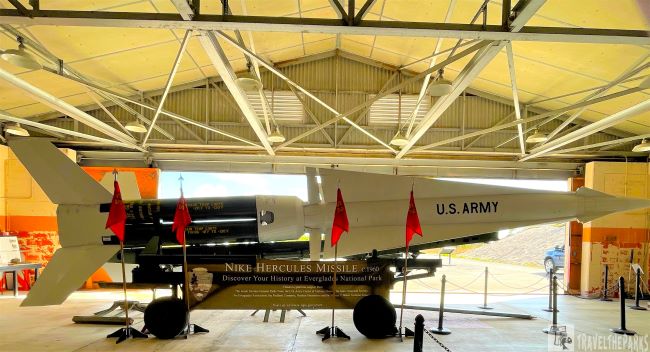
Take a Tour of the Missile Site
This tour meets at the Daniel Beard buildings before traveling to the missile site. The only way to see the actual missile site is to take the ranger-led tour. The highlight of the ranger-led tour is the missile assembly building that holds the missiles, including a restored Nike missile! This restored 1960 Nike Hercules Missile was just one of four. The base never fired any missiles. There are three hangar buildings and bunkers at the site. The building contains missile equipment and electronic parts the Army used.
PRO Tip: There is no shade available, no water available, and there are no restroom facilities during the tour. I recommend checking tour times with the park rangers at Royal Palm before driving the 14-miles to the site.

Exploring the Scenic Hiking Trails Along the Road to Flamingo

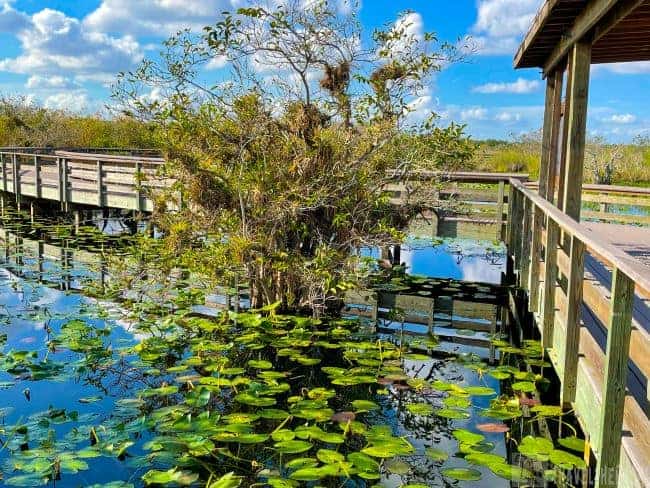
Walk the Anhinga Trail (MM-3.7)
A 0.8-mile boardwalk loop through Taylor Slough offers expansive views of the river of grass. The wide paved walkway leads to a raised boardwalk loop and observation platform over the wetlands. Great opportunity to see a lot of wildlife. This is the best place to see alligators. Even in the dry season, there is plenty of water. We spent most of our time looking for bedding Largemouth Bass. Most times we are catching Bass, not watching them do their mating ritual. It was fascinating watching them. If you download the NPS app ahead of your visit, you will have access to the trail map.
TIP: This trail can be crowded because of the proximity to Homestead. I suggest arriving early in the morning or later in the afternoon is best.


Don’t Miss the Gumbo Limbo Trail (MM-3.7)
This is a 0.4-mile trail through a tropical hardwood hammock. This trail is less traveled compared to the Anhinga. The trail is asphalt-paved and wheelchair accessible. There are interpretive plaques placed throughout the trail detailing the flora and fauna. They label many of the trees so you can learn their names. On the trail are a few solution holes. These are formed gradually over time when acidic water erodes or is dissolves the karst limestone. A cool walk to escape the heat of the day, however, mosquitoes are always present in wetland environments.

NOTE: You should take care along the trail, as poison ivy and poisonwood trees can cause reactions when touched.


Pinelands Trail a Diverse Landscape (MM-6.8)
The Pinelands trail is a 0.4-mile walk through a slash pine forest. They place general information about the flora and fauna of the Pinelands ecosystem on interpretive signs along the trail. Much of the subtropical forest undergrowth comprises saw palmettos, scattered ferns, and other lush vegetation. We saw tree snails and various lizards as we walked along the trail. There are solution holes created when rainwater and decaying leaves combine to dissolve limestone bedrock. Water is stored in a natural pool formed by sinking soil. These provide needed water for wildlife during the dry season. I find the unique geology of the Everglades and Florida to be fascinating. (Long Pine Trail Map)


Cypress Dome Boardwalk – Pa-hay-okee Overlook Trail (MM-14.2)
This is a very short 0.2-mile loop trail that ends with a raised platform where you can view incredible, panoramic of the river of grass. Pay-hay-okee in the Seminole language translates to “grassy waters.” The trail begins in woodland before emerging over the grassy slough. From the observation deck, you can see the vastness of the Everglades Sawgrass marsh. It seems to go on forever in the distance. Trail map-Click here.
Travel TIP: If you have the time, this is a great place to view the sunset. The panoramic views of the “River of Grass” are amazing.


A Walk in the “Jungle”- Mahogany Hammock Trail (MM-21.8)
The trail is about halfway between Homestead and Flamingo. This is a 0.4-mile loop through an island tropical forest hammock. A raised boardwalk takes you through the grass wetland to the island jungle. The walk is suitable for everyone, including small kids and wheelchairs. There are no facilities in the parking area. Certain times of the year, mosquitoes may be a problem, so bring plenty of bug repellent. I love this trail for its unique perspective of the everglades. These isolated hammocks are a lifeline for a myriad of species like panthers, bears, otters and migratory birds. Even in the wet season, they provide an oasis.

As we walked onto the hardwood hammock, epiphytes cover many of the large hardwoods. It amazes me how a small rise in elevation can become a completely unique ecosystem. We saw many trees during our walk, including Strangler Figs, Gumbo Limbo trees, and palms. The highlight on this trail is you will see the largest living mahogany tree (Swieteniamahogani) in the United States. Virtually all the Mahogany trees were over-harvested in the early 17th century. They prized the trees for their durability, used for shipbuilding, furniture, and other uses. We found this to be the best hike, probably because we had the hammock to ourselves. It was refreshing to take our time, enjoying the solitude of the moment in this tropical oasis. If you are lucky, you will see a barred owl.

Paurotis Pond Picnic Area-Nesting Bird Rookeries (MM-24.6)
Located 24-miles from the main park entrance in Homestead, Paurotis Pond is a good place to stop and eat a picnic lunch. There are three tables near the shoreline of the pond. Occasionally, the area is seasonally closed for fishing and canoeing due to nesting birds on the island. We saw so many species of birds here. White Ibis, Snowy Egret, Roseate Spoonbill, Wood Stork, Little Blue Heron, Black-Crowned Night Heron, Great Blue Heron, Great Egret, and Anhinga, to name just a few. This aquatic habitat is a crucial nesting area for the endangered Wood Stork.
Mosquitoes are always problematic in the Everglades, however, in the dry season, they can be tolerable. We enjoyed our picnic and cast a few lures before continuing on our journey south towards Flamingo.

Explore the 9-Mile Pond Canoe Trail (MM 26.5)
We rented a canoe for the day. The canoe trail is a 5.2-mile loop. A ranger-led tour is available most days-check with the visitor center or you can reserve a canoe at the Flamingo marina. We rented a canoe and picked up paddles and life jackets at the marina. They gave us a combination to unlock the canoe that was already at Nine Mile Pond.
In spite of the fact that today the PVC markers make following the shallow water trail easy, be aware that the white PVC markers aren’t always easily visible. The maze of mangroves, periphyton and sawgrass at times makes it difficult to maneuver the canoe. Even though it is the dry season, the water levels are higher than usual and the overcast weather and cooler temperatures keep the mosquitoes away today. Most on our tour, we did not see much in the way of wildlife due to the poor weather conditions.

West Lake Trail (MM-29.7)
This is a 0.4-mile self-guided boardwalk trail through a mangrove forest, a unique and vital saltwater environment. It damaged much of the boardwalk during the last hurricane, so it is no longer a loop. However, it is still worth venturing to see the lake. The wind also damaged many of the mangroves.

You will see three types of mangroves. There are red mangroves, black mangroves, and a few white mangrove trees. Red Mangroves are easy to discern from other mangroves. it has roots that hang from the branches descending to the waterline. The prop roots of all mangroves stabilize shorelines, protect it from the battering of waves. The prop roots of the mangrove trees are an ideal habitat for juvenile fish, creating a nursery of sorts. Buttonwood is also in abundance along the boardwalk.

Journey through the West Lake Canoe Trail
There is an 8.1-mile canoe trail (one-way) to Alligator Creek, ending at the mouth at Garfield Bight. Watch for alligators and crocodiles. On a windy day, the lake can be difficult to navigate as the trail crosses the entire length of West Lake. Always check the weather report before hitting the trail. PVC trail markers direct you into Long Lake. Long lake is more protected as it is long and narrow. From here, follow the PVC markers you zig-zag your way through what is called, “the lungs” before entering Alligator Creek that empties into Garfield Bight. This is 18-miles round-trip and not for the feint of heart. Backcountry permits are required if you plan on camping. We never completed the trail, however, we did complete the first 3-miles before turning back. It is a great way to experience the park.
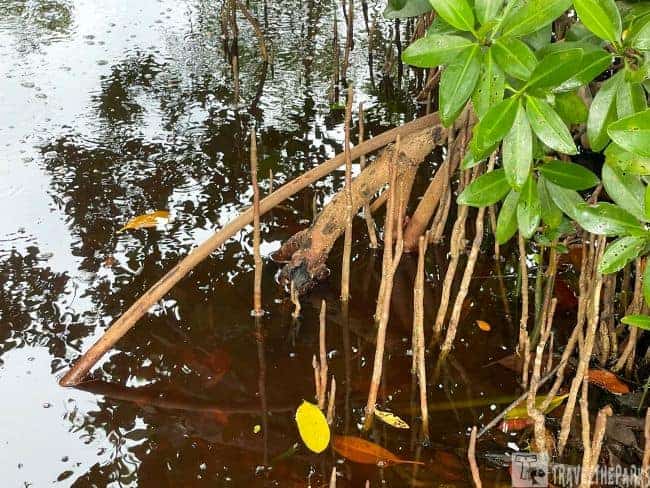
The boardwalk over the open water is a birder paradise, especially in the dry season. We saw many common wading birds, including Purple Gallinule, Limpkin, Coots, Herons, Ibis, and Roseate Spoonbills. You can view alligators along the boardwalk sunning themselves in the cooler winter days. There is also a launch for canoes and kayaks and a cover area for protection from the sun. Great spot to sit and watch the wildlife. This is the first stop with restrooms after leaving the Royal Palm area.

Hell’s Bay Canoe Trail
Nice peaceful paddle meanders through the mangroves. We rented a tandem kayak for 1/2 day. It was plenty of time to complete the 6.75 mile out & back trail. The trail is marked with white PVS poles to show you the way. It is 3.0 miles to Lard Can backcountry campsite, 3.5 miles to Pearl Bay Chickee, and 5.5 miles to Hell’s Bay Chickee (all require permits to camp). Today, with the brisk wind, we only get as far as Pearl Bay Chickee before the skies begin to look foreboding for rain. They say the trek is “Hell to get into and Hell to get out of.” Bring water, sunscreen, bug spray, binoculars, snacks in a waterproof dry bag. A camera is a must take advantage of the amazing views. It really was an enjoyable afternoon, a leisurely paddle. Lots of wading birds and a few alligators.
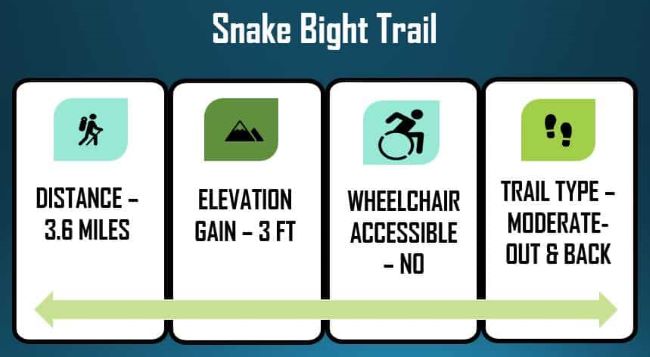
Navigate the Snake Bight Trail (MM-33.1)
A 3.6-mile out & back trail, it’s a straight, flat walk to Florida Bay from the main road. Usually well-traveled, this trail follows the Snake Bight canal. The dry season is the preferred time to hike the trail because it is cooler. It’s brutal to deal with mosquitoes during the day when it is hot. Even on cold days, long pants and bug repellent are required. The trail begins in a tropical hammock giving you lots of shade. This trail can be quite muddy in places. The last section closer to the bay is fully exposed, with little to no shade. Marvellous views of the bay from the boardwalk. Currently, the trail is not maintained by the park service.

Don’t get thwarted by the mosquitoes. If you make it to the end of the trail, you will be rewarded. The bay views are amazing. There are lots of birds to see if the tide is not low. Bring binoculars. We saw plenty of Roseate Spoonbills, White Pelicans, and flamingos. The mangroves along the trail are home to Flycatchers, Warblers, and Catbird. We saw a few alligators sunning, trying to stay warm in the cooler air. I wish we had brought the fishing rods to fish the canal, maybe next time.

Close to the Roadway-Mrazek Pond (MM-34.2)
The pond is located 4 miles north of the Flamingo Visitor Center. It can be a great place for birding. When water levels are low, it can be one of the most exciting birding sites in North America. Throughout the winter months, hundreds of migrating water birds, including ducks, herons, egrets, and white pelicans, frequent the waters. The day we stopped on our return to Homestead, we saw kingfishers and ibis.

Follow the Old Ingram Highway-Rowdy Bend Trail (MM-34.5)
This 2.6 mile out & back trail follows an overgrown roadbed ending at the Snake Bight trail. It can be completed as a loop. It traverses through coastal prairie forest with lowland buttonbush and marsh grasses. Tons of epiphytes hug the trees. Best to wear long sleeves, long pants to guard against the ticks and mosquitoes. If you have a bike, this trail is ideal.
Again, this trail is not maintained as it along with Snake bight, Bear Lake, Christian Point, Bayshore loop and the Coastal Prairie trails. These areas have been deemed critical habitat for the Cape Sable Throughwort, an endangered sunflower-like herb with bluish purple flowers.

Enjoy Lunch at Coot Bay Pond Picnic Area (MM-34.5)
The roadside area reminds me so much of the Big Cypress National Preserve. The mangroves mirrored in the water were perfect. There are three picnic tables that are close to the water. Mangroves obscure coot Bay Pond however, it is still a nice stop along the road for a bite to eat. We did not have a saltwater fishing license but could see snook striking bait in the clear tannic waters.

Adventure along the Christian Point Trail (MM-38.1)
The out and back trail is 4-miles and moves mostly through dead buttonwood snags. Saltwater intrusion during the last few hurricanes has damaged much of the landscape. The trail was extremely muddy and flooded when we last attempted to do it. It was difficult to follow at times because it was so overgrown. The dense mangroves harbor hordes of mosquitoes even on a windy day. WE finally made it to the end of the trail-Florida Bay. It is mostly through coastal prairie with mangrove flats as you get closer to Snake Bight.

Bear Lake Trail (MM-39.3)
This 3.5 mile out & back trail follows a dirt service roadway for the first 2-miles it is drivable following the Wilderness Waterway. The first time we did this trail, the mosquitoes were so bad we had to turn back. Even bathed in DEET, it did not deter the pesky insects. The 2nd attempt was so much better with near-freezing temperatures, overcast skies and brisk north winds. The path is overgrown but still easy to follow. Saw beautiful spider webs in early morning dew. The road is not well maintained and has potholes, but our truck easily made its way down to the trailhead. Good views of the bear lake at the end of the trail.

Eco Pond Trail (MM-41)
Is an easy walk just off the road at the Flamingo Campground 0.5 loop around the lake. Due to its proximity, it is popular. The freshwater pond is home to lots of different bird species. Alligators and turtles were sunning themselves after the cold spell. This is a great hike for the kids.

Follow the Access Road-Coastal Prairie Trail
This trail is an out-and-back 12.0-mile hike behind Flamingo C Loop Camping. Don’t forget to wear long pants, long shirts, and plenty of bug spray. We are only planning to walk the first half of the trail today. As the tide is out, despite rain and flooded trails, we have the tide on our side. This trail follows an old roadbed that was once used by cotton pickers and anglers. A thicket of oaks precedes the trail, which veers away from the beach into the flat coastal prairie. The trail was truly isolated, with no one else around. It would have been nice if we had more time to do the whole trail, as the beach at the end is supposed to be excellent for finding seashells. It will need to wait until our next trip. If you plan to backcountry camp at Clubhouse Beach, you will need a permit.

Flamingo-The End of the Road (MM-40.3)
The entire drive through the Everglades from Homestead to Flamingo is a River of Grass. However, Flamingo is the last stop on the road into the southernmost Everglades National Park. The area opens up to spectacular views of the beautiful Florida Bay. Hurricane Irma damaged the many of the facilities here. Currently, the visitor center is confined to a small trailer. The parks have limited funding, so my guess is that the facilities will not be refurbished any time soon. There is plenty of parking, the campground, the marina, and the visitor center. There was a nesting osprey in the parking lot.

The Marina offers a small store, boat tours, and boat launch. The marina has excellent options for either taking a motorized boat trip in the canals or renting a kayak or canoe and go at your own pace. We stopped in at the marina for a quick snack (the staff was great) and used the restrooms. I was debating renting a canoe for a few hours, but we were getting pretty tired. We found the prices to be quite reasonable, maybe next time. There is a food truck with excellent cuisine for breakfast and lunch. The food was really delicious.
The camp store sells all the connivences, from ready-made items, beer and wine, and essential items you may need. They do have gasoline, but it is an exorbitant price. I saw $6.58/gallon. In a pinch, it would be a lifesaver.

Navigate Florida Bay on the Guy Bradley Trail
This easy paved 1.5-mile trail connects the Flamingo Visitor Center area to the Flamingo Campground follows the Florida Bay. I can imagine that the mosquitos would be vicious, but we did not have bugs today. The 44-degree weather and high winds made this an easy 25-minute walk. The trail is quite beautiful now, with the construction of the new lodging and renovation of the visitor center completed. Flamingo Area Trail Map-Click here.

Take an Everglades Backcountry Boat Tour
The best advice is to take a backcountry boat tour that traverses the Buttonwood Canal through Coot Bay and Tarpon Creek into Whitewater Bay. The boat tour was very educational, the tour narrator was also entertaining. We saw a couple of enormous crocodiles just sunning themselves on the opposite bank and around the marina docks. Our guide also pointed out a few manatees in the marina. The boat tour is a great opportunity to photograph birds. We saw lots of different migratory birds. I just wish we had time to do the sunset cruise.

The 90-minute Everglades Backcountry Tour departs daily at 11:00 AM, 1:00 PM, & 3:00 PM. The park also offers a 90 minute Everglades Florida Bay Tour that departs daily at 12 noon, 2 PM and 4:30 PM. Visit www.flamingoeverglades.com or call (239) 695-1095 for more information.

We headed back to our campsite to watch the sunset in the Florida Bay. Thus ending our perfect journey in the Everglades. Flamingo has many options for camping and is open year-round. There are two loops, with loop A having 55 tent sites and Loop T has 65 RV sites (most with 20/30/50 amp electricity). Group camping and Eco Tents are also available. We stayed in Loop T on site 34. They have a dump station and water fill station near the restrooms. The T Loop restrooms do not have hot water, however, the Eco Tent and A Loop are solar heated.

Where to Stay on the Road to Flamingo
It is very quiet in the campground. There are tables, fireplaces, and plenty of space at each campsite. There is not much shade in either of the campsite loops. A tent camper uses the C Loop, while an RV camper uses the T Loop. Many T Loop campsites have electricity, as well as an onsite dump station and water refill station near the restrooms. The restrooms were very clean. C Loop & Eco Tent showers had solar hot water and good water pressure. The T Loop showers do not have solar heating. The location is perfect for hiking trails and kayaking the backcountry early in the morning.

Eco tents are another option if you plan to stay overnight in Flamingo. Each Eco-Tent has electricity, queen bed, and storage. For your belongings, all in a glamping environment protected from the mosquitoes. They are in close proximity to all amenities. Opening soon is the new lodging for Spring 2023.
Planning Resources Everglades National Park
The everglades drive from Homestead to Flamingo should be on everyone’s bucket list.
- Everglades National Park website for planning your visit to the park.
- Flamingo Boat Tours and Rentals book ahead of time.
- Shark Valley Tram Tours these tours fill early, so plan accordingly.
- Lodging in Florida City/Homestead Area – Staying near the park gets an early start into the Everglades to drive Homestead to Flamingo.
- Accommodations Everglades City Area
- Big Cypress National Preserve

Final Thoughts on Enjoying the Epic Everglades Drive from Homestead to Flamingo?
We were lucky this year to return and do the drive from Homestead to Flamingo. Much has changed since we last did the drive. However, it still mystifies me how the Everglades seem to endure. The hurricanes and other natural events only seem to strengthen the park’s reserve. I find every time we return; I learn something new. If you get the chance, stop at each trail to see the diversity of the park. This was a great Everglades experience! Truly a special place!
Have you done the Everglades drive from Homestead to Flamingo? Did you enjoy your drive through the Everglades? Share your comments below. We love hearing from our National Park friends!!



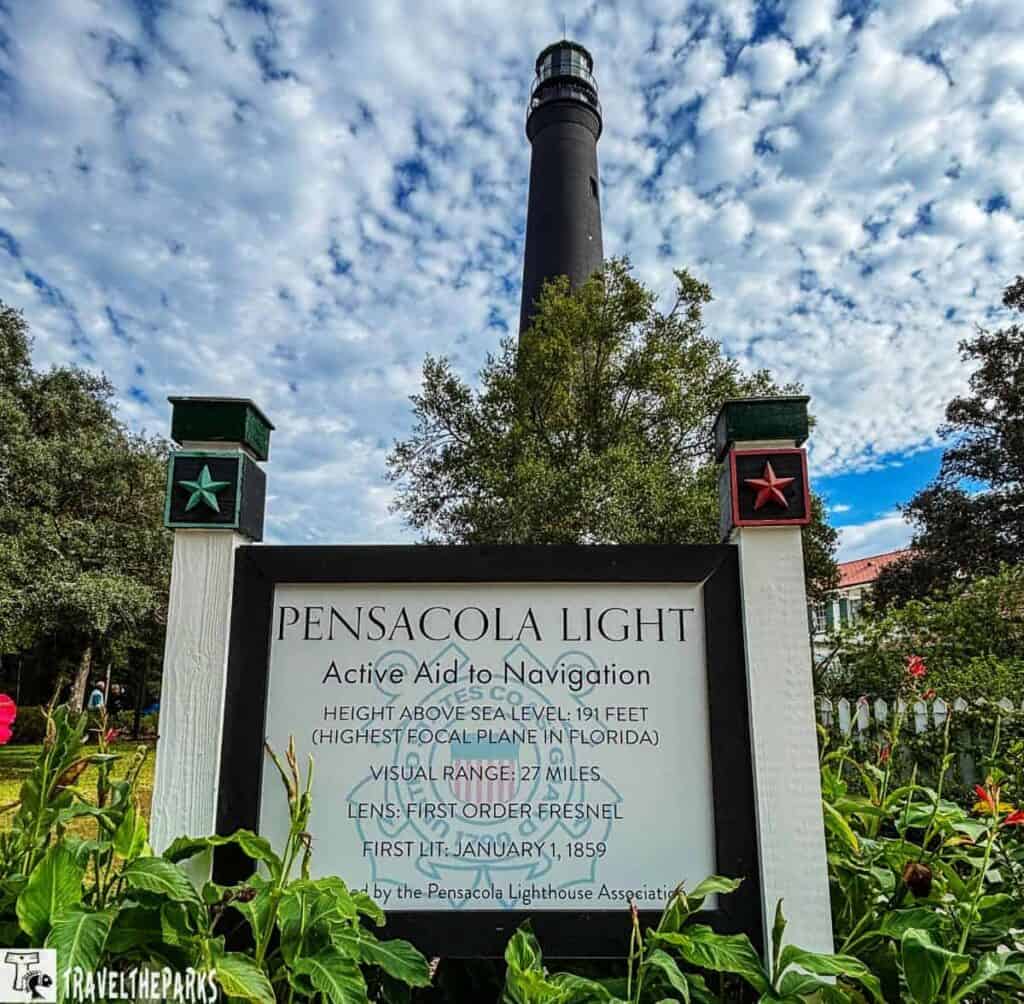

Cathy
Can’t wait to visit the Everglades now!
Travel the Parks
It is a special place, very different from Zion or Rocky Mountain. I hope you enjoy your visit!
Muriel Williams
The canoe trails are a must do in the Everglades. We did 9-mile pond and Hell’s bay. The bugs were definitely tough, but the scenery was breathtaking!
Travel the Parks
I am so glad you enjoyed your trip. We have been lucky to have colder weather on both trips to the Everglades. The mosquitoes can definitely be a problem. Thanks for reading our blog.